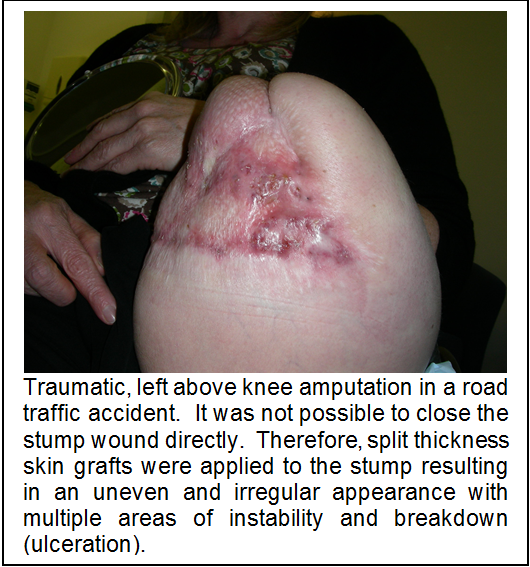Stump revision
Get in touch
Most amputees do not have a choice about when and how their amputation occurs. As a result, the residual limb may not be entirely suitable for fitting of a prosthesis. The patient must then suffer the double insults of losing a limb and having to undergo further painful surgery to create a residual limb which does allow them to wear a prosthesis.
In many cases, patients must endure multiple surgical procedures before they are able to wear a prosthesis with any degree of comfort.
There are many reasons why an amputee may wish to undergo stump revision surgery to their residual limb including:

- Excess soft tissue which interferes with fitting of a prosthesis
- Awkwardly shaped residual limbs which do not fit well in a prosthesis
- Tight scars which may be painful
- Dimpled scars which collect skin debris or dirt
- Unstable and insensate scars which ulcerate and breakdown
- Painful areas in the residual limb
- Bony prominences which chafe and rub in a prosthetic socket
- Repeated episodes of folliculitis (infections associated with hair follicles)
- Cyst formation
- Inflammed and painful bursas
- Unsightly appearance
- Heterotopic bone formation
It is worth noting that many of the issues listed above (especially awkwardly shaped residual limbs, tight and unstable scars, problems with bony prominences, repeated skin infections and cysts) can be avoided entirely if the need for a socket-fitting can be eliminated. This can be achieved through direct skeletal fixation with an osseointegrated bone-anchor.
Moreover, use of a bone-anchor means that your prosthetist does not have to cope with the (virtually) daily fluctuations in shape and volume of the residual limb which compel many patients to have a new socket cast nearly every year.

